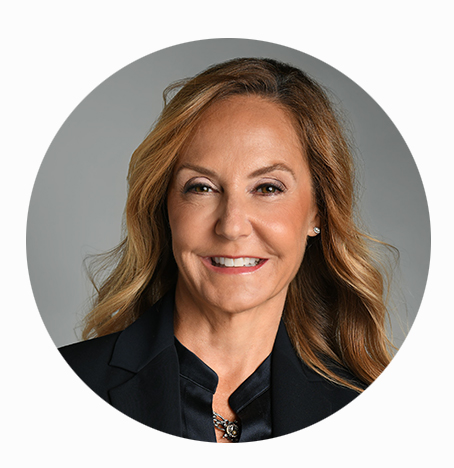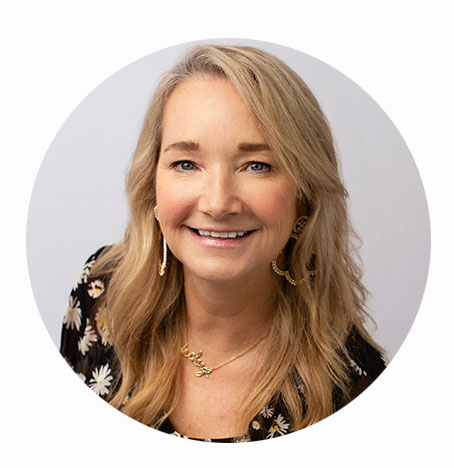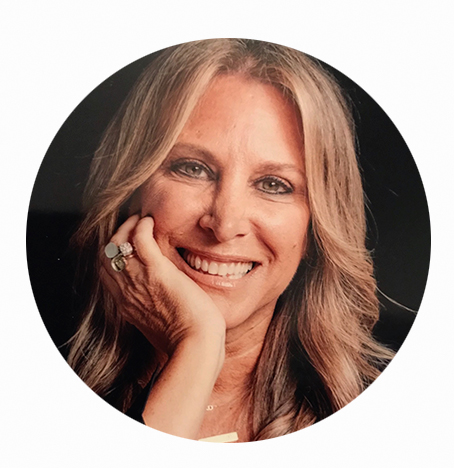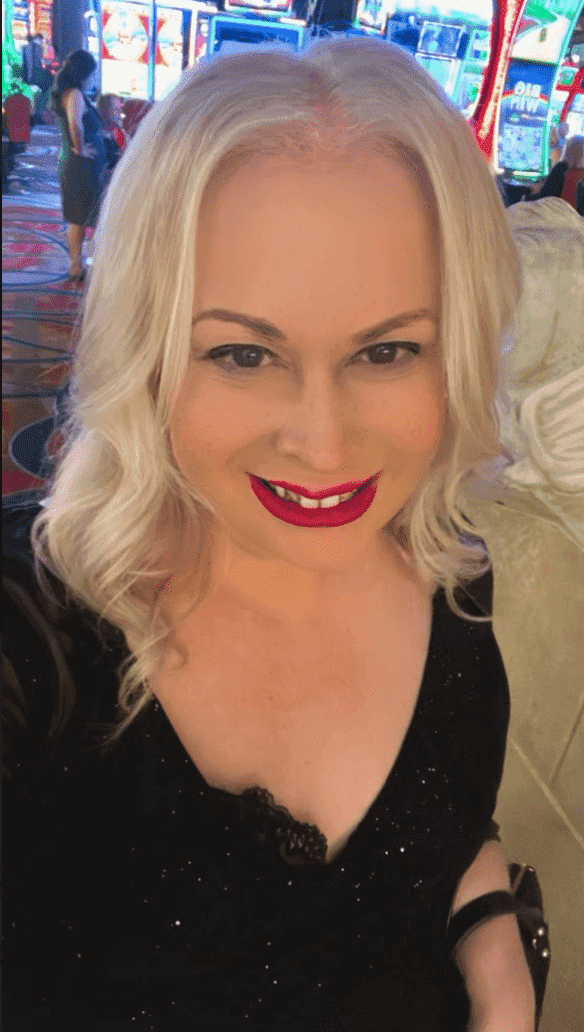Lara Schmoisman 0:00
This is Coffee Number Five. I’m your host Lara Schmoisman. Hi, everyone. Welcome back to Coffee Number Five. Today, I was thinking fashion because you know, the summer and you want to change your looks, maybe you change your hair. I don’t know, if you guys saw that I changed my hair too and I, you know, that comes in the air and is the seasons that they change. And sometimes we can do so many little tweaks to what we are wearing. And that makes a huge difference. And like you guys know, for me is all about shoes, and sunglasses. And those are accessories. And accessorizing is so important. And a lot of people don’t even realize that that’s part of fashion, or it can make such a drastic change something you’re wearing. So today I brought a good friend and an expert, Karen Giberson, did I say it right?
Karen Giberson 1:04
That’s Giberson. Yes. No worries.
Lara Schmoisman 1:08
Yes. So Karen, she is the President of The Accessory Council. And also she’s the Editor in Chief of the Accessory Council Magazine. Did I say it right, all that?
Karen Giberson 1:18
You did indeed.
Lara Schmoisman 1:20
Okay, perfect. So, Karen, thank you so much for being here. I’m static of talking to you about accessories and the accessory industry.
Karen Giberson 1:30
Well, you know, we have so many amazing categories to pick from. It’s there’s always something fun happening. So accessories aren’t just your handbag. Like you mentioned, it happens to be really could be anything from your head to your toe that isn’t your clothes. So hats, hair accessories, jewelry, scarves, ties, anything that, you know, kind of helps accentuate the outfit all the way down to the tootsies. And
Lara Schmoisman 2:05
It’s hard to accessorize. It’s really hard sometimes, because how do you know if something matches or doesn’t match? Or something goes well, you have to have that eye to accesorize well.
Karen Giberson 2:18
Well, I think first and foremost accessories are a safe place to experiment, it’s a safe place to experiment with trend with color, you know you a lot of things have have different purposes. So one buys an accessory for two reasons, function or fashion. So function, I may buy a hat because I want to protect myself from the sun, I’m buying sunglasses, because I want to protect myself from the sun, I might buy a certain kind of bag because I want to be organized. So you can take a functional approach to what you buy. Or then you can take the fashionable approach that says, you know, I have a basic black dress, and I have to go from my office to evening event. And by simply changing out your jewelry, and your bag, you can take a you know, a basic outfit and go to a glam event. So I think it’s a little bit about using using them for strategy and using them to have fun and be playful.
Lara Schmoisman 3:25
What I love about accessories is that you can really make an outfit your own
Karen Giberson 3:32
You know, the difference between, you know, statement making images, like look at what you do on social, if you see someone that really catches your eye, it’s usually the accent pieces, it’s their, you know, could be a wonderful scarf that they’re wearing. It could be, you know, beautiful burette or, you know, a piece of jewelry that really catches your eye. So I think they’re they’re essential elements.
Lara Schmoisman 4:03
Yeah. So how did you get into being the president of accessory Council? And, I mean, this is an incredible journey you had here and with a lot of knowledge. So tell us a little bit about your story. And how did you get here?
Karen Giberson 4:21
Well, you know, when I was coming out of college, I had a degree in theater, Arts and Communications and honestly running a trade association wasn’t even something that I thought was a job, or it would never have occurred to me to say I want to work in that field. But I did get a job working at Macy’s and I went through their executive training program and I was I was in the store line for a while in the buying line. I got a job working in the sterling silver jewelry department. And so I was already experiencing wonderful you know, I was having a good time in retail, but I love I loved working in jewelry. I loved the vendors, I loved learning about metals and stones and meeting the designers like I really hit something that I was passionate about. And then I had the opportunity to go work at QVC. And that was kind of a perfect meld of my education. So communication, theater arts, and here is retail, live on TV. So there, I worked in a lot of categories, but really found a spot in the accessories world. And at that time, you know, it was kind of the earlier days of QVC, we had such a broad assortment of product from comfort, to really beautiful balled fashion items, we worked with designers. And we worked with a lot of items that have very specific functions. And you’re, again, just love the industry, I love the people that I worked with. But early in the day, at QVC, people don’t want to sell product to QVC. Now it’s you know, bonafide retailer. But back then there was a lot of skepticism about selling on TV,
Lara Schmoisman 6:15
Wll, QVC it’s hard, even for emerging brands, because of the quantities. And the margins,
Karen Giberson 6:22
Yeah its quantity, its margins, its returns, you know, can be one of the most amazing outlets to sell. Because you’re you’re you know, it’s a little marketing, along with sales, because you’re talking about the item you’re describing it. But, you know, it mostly was imaged at the time, people didn’t want to put that product on TV. And I got involved with the Accessories Council while I was a merchant QVC because I saw a little teeny ad and Women’s Wear Daily saying their group was being formed. And I felt that and this would be a piece of advice that it’s much harder to say no to someone, if you know the,. People weren’t gonna say no to me, they were gonna have to listen to me. And they were gonna have to look me in the eye, instead of just being an anonymous voice on the phone, if you think about all the emails that you get all the calls that you get, if you want to, yeah.
Lara Schmoisman 7:25
Yeah I don’t have the time to answer to everyone, but I will make the time for someone I know.
Karen Giberson 7:29
Right? So that was my goal. It was like, I’m gonna network with as many people as I can. And hopefully they’ll listen to me, and at least give me, you know, no may still be the answer. But it will be, you know, at least they’ll have heard the reasons why. And you know, what I got I networked my tail off, I got some no’s, but I also got yeses along the way too. And it really was helpful.
Lara Schmoisman 7:59
Yeah, well, let’s talk about yes and no’s because sometimes we take the no’s very personal. And we don’t realize that the other company might be going through something or they just don’t have the budget, or they don’t have the location for that budget. So I always say never bring burn bridges. Just keep the relationship and say okay, I’ll talk to you later.
Karen Giberson 8:21
No, no doesn’t mean never, it could be for now. Exactly. And, you know, it’s about maintaining communication relationship and you know, things change, the staff might change, the positioning of the brand might change, yours might change. You know, plenty of people change their mind, even today, do things with us when the time is right.
Lara Schmoisman 8:46
As I got involved with accessory console, I mean, I never even knew that something like this existed. And then I mean, there are so many wonderful that people involved so many designers and entrepreneurs out there trying to get the brand out there. So how the council can help them?
Karen Giberson 9:06
Well, you know, business is harder than ever, and the council offers a number of different programs and opportunities to their members, to our members to help you grow your business. And in fact, you know, we only want members who are going to participate. If you you know, you just sign up and you think it’s all gonna come to you. It doesn’t work that way. You have to attend with educational events. Often, we encourage you to attend. We have networking events, you know, when people show up magical things happen that you know, we could not have guessed, you know, you may meet someone who becomes a client or you you know, we see a scarf company meet a handbag company and all of a sudden there’s a collaboration.
Lara Schmoisman 9:58
Well, I love collaborations
Karen Giberson 10:01
So you know, networking is, is pretty powerful. I love that, you know, we’re doing in person events again. So you know, education is part of it. Mentoring is part of it. You know, we have a few awards programs, we have something called ACE Awards, which we just had, that’s a networking and press event. But we have our Design Excellence Awards coming up, that’s about honoring product. And really giving the companies who participate a tool to help stimulate sales and start a social conversation about their product. We have newsletter communications really important, we put all of our opportunities out once a week, and it’s pretty easy to participate and sign up. Most everything we do for our members doesn’t cost anything, once you remember,
Lara Schmoisman 10:51
How it’s different to market besides the different processes or designs and development that you have for accessories than fashion, what is the difference in the market?
Karen Giberson 11:07
Well, in some ways, there is no difference. And in other ways, it’s light years apart. So you know, it depends on the category. You know, if I’m talking about optical, you know, if I’m if I’m this, this is, it’s a nice pair of sunglasses, but it’s also a medical device. So there’s a different market, if I’m talking about that jewelry, you know that fine jewelry, or, you know, if so there and you’re using gemstones that could be different laws and regulations in fashion jewelry. So there are nuances to each of you know, too many of the categories that are different than making a shirt. You know, but beyond that, I think that the biggest and most important thing about accessories, they always fit. Yeah, when you go into a store, usually you see accessories on the first floor, their margin builders, if you’re in retail, you know, accessories are something that can be sold in many, many places beyond traditional, you know, fashion stores, because you could be in a gift shop and find a rack of reading glasses or a bookstore, or, you know, a gift giftable wallets were very giftable is because of the fit nature, it’s easy to be in gift stores, not just fashion stores. So it’s the categories are very versatile.
Lara Schmoisman 12:36
And there’s something very interesting that I noticed in my years working with the fashion and accessories industry, that fashion is not something that you promote, or you advertise on television about why why is that?
Karen Giberson 12:54
You know, TV advertising production is very, very expensive. I think for most of the companies that there just isn’t, you know, the margins. Now there are certain jewelry companies that do an amazing job advertising. On TV,
Lara Schmoisman 13:13
I think that they’re more like retail chains. That,
Karen Giberson 13:18
Yeah it’s mainly jewelry, you know, people like Pandora do a wonderful job or, you know, the Signet group, which is Kay’s and you know, those those, you know, most fashion companies, not all of them, but most of them, they’re not that big. I mean, you know, it’s not like Mega beauty companies or mega fragrance companies that, you know, are hundreds of millions of dollars. Most fashion brands are, you know, much smaller.
Lara Schmoisman 13:51
I know so many people that they have ideas, oh, I want to have my fashion line, even I might have tried own a fashion line one day, or accessory lines because it’s sometimes that you don’t find what you’re looking for. So you dream to do one. So if you really want to do it, where do you start?
Karen Giberson 14:13
What kind of fit depends on the category. You know, we see a lot of startup and we seen a lot of startup businesses and jewelry because it’s a relatively accessible category to get started in. You can buy components you can take there’s a lot of classes there’s a lot of availability to learn and do it yourself and do it yourself welll, I mean we’ve seen people do you know not hobby jewelry, but really making and starting very viable businesses right on their kitchen tables. And I would say if you drew a line back to some of the big brands today like take a Julie Vos or Kendra Scott, they all started very small, where other categories are a little tougher to get started in like footwear. And the reason why is because you You’ve got to deal with fit, you have different lasts for different sizing, you’ve got a relatively, you’re even if you’re ordering a small run, you’re still ordering runs of shoes. So you’ve got more,
Lara Schmoisman 15:15
You probably have a minimal order tp,
Karen Giberson 15:18
So those are harder categories to get started. But you know, certainly people do it. Often, if you have a passion for it. You know, we, we have a few companies that have just started up footwear lines, and they’re doing an amazing job. But it’s a more specific,
Lara Schmoisman 15:38
And you need to have a specific education to be able to, and it’s not that easy, like taking a course that you can learn jewelry than when you have to do footwear design is a very specific knowledge.
Karen Giberson 15:53
Correct. So it depends on, it depends on what category you want to start in. And you know that no matter what the category is, there is education, there’s ways to do it. It’s just about investment. And, you know, then once you pick your category, where’s the most prudent place to get started for, you know, minimums, the price point that you want to hit, you have, there’s a globe, there’s a whole globe out there of global opportunity and places to manufacture your things.
Lara Schmoisman 16:26
I’m glad that you mentioned that, because I’ve been following a lot of startup designers that they really they’re struggling with a manufacturer because they want to be manufactured in Italy. And then the cost is it’s really hard to gauge
Karen Giberson 16:45
For a while manufacturing in Italy was very expensive. I’m actually seeing some really, more sensible options, again, depending on the category what you want to make. But there’s definitely and it depends on the region that you’re in, in Italy, no one. I shouldn’t say no one few people say, you know, made in Tuscany, it may say made in Italy, but there are, you know, across the Adriatic coast, some amazing leather manufacturers. There’s jewelry manufacturing. So it’s not undoable, if that’s something.
Lara Schmoisman 17:21
But what I know it’s marketing on the I know that that’s my my part. And but I know that a lot of people want to say made in Italy, but I think maybe they’re going for the wrong market. It depends of the price point who’s your target audience? Sometimes it doesn’t make sense to make it in Italy?
Karen Giberson 17:42
Yeah, and, you know, be honest with you. I’ve spent a lot of time in India, and I’ve seen a lot of Made in Italy product, you know, that gets finished in Italy and then says, you know, made in, you know, Made in Italy. So I think that transparency in your supply chain, just being honest, using the best factories wherever they happen to be, you know, treating the workers fairly and being proud of wherever it is, whether it’s in the US or Italy or, you know, it could be in China, there’s some amazing factories and crafts.
Lara Schmoisman 18:20
I love that you say that because it’s more about the brand’s story and about creating the right product for the right price for the right target market than where you say you made it.
Karen Giberson 18:33
Yeah. I mean. And I think it’s also being true to your brand and your design. I mean, if if your design is, you know, Italian based art, then you know, you should be made in Italy. But no, I don’t think it matters so much anymore.
Lara Schmoisman 18:54
So when you have a brand, let’s say I’m a startup, I came up with a few align of your products. What do you do next beside joining the console?
Karen Giberson 19:05
Once a company joins, we do we call it like an intake session, I want to learn as much about that brand as possible. I want to know You know, if we there’s a designer to meet, I want to meet the designers I want to understand what their target goals are. Sometimes we might have feedback for them based on the things that we see because we’re on the ground we see things all the time. And it might be this is amazing. But you know, maybe your price is a little high or you know, here’s some packaging opportunities for you. It’s making product is only part of it. It’s how you as you know, how you brand it, how you market it, how you position it that really can I know
Lara Schmoisman 19:51
What you just said is so valuable Having someone that is on the ground and they know all the competition and they know what’s going happening because you’re not only know the designers, you’ll know the buyers too.
Karen Giberson 20:04
We try, you know, that’s what we talk about all day long. And it’s a body of experience that you get when you work with a, you know, someone like us or other trade associations that just understand the market. Because that’s, you know, that’s kind of all we do.
Lara Schmoisman 20:22
And how do you feel these days, because there’s so much opportunity in D2C. For us, it’s better going D2C, retail try to get a mix of both because the margins are different.
Karen Giberson 20:36
The margins are different. One of the mistakes we see companies making is starting D to C and not having enough margin to take it to retail. I think that today, you can’t rely on any one answer, or your distribution, I think the world has become. And the opportunity to buy our product is in many, many different places. So I think you look at your product. And I think you have to say, what are all the opportunities all around it? Where I have to sell this product? Does it work? In mass, you know, is their mass distribution? Is it a department store product? How do I maximize my own website, or their creative DTC things that maybe aren’t as obvious? Like we have some companies that are just doing charity circuits. Basically, they’re showing it, you know, no.
Lara Schmoisman 21:33
Yeah prompt shows and yeah, there, there’s so many, that’s something that I always advise and I always encourage people even to talk to me before they this kind of strategy, what do you want to do with your product? What even when we talk about packaging, how you want to position your product? What do you want to see it in the store next to what, what other products? So because that means a lot about packaging. How are you going to differentiate yourself? How are you going to stand out? I even though I believe in an omni channel, in every level marketing on omni channel, also selling on omni channel, but you cannot do everything at the same time because you’re going to be set for failure.
Karen Giberson 22:15
Yeah, and, you know, here’s a real story. And I had a conversation with a major department store. Divisional yesterday, amazing team, like it’s a kind of store a lot of people run do business with. And he said, I’m we, we are very big about trying new brands, we really love trying new brands, we put three new brands in last year, that’s three, you know, that was exciting for them. The fact of the matter is that if you’re going to go into certain distribution, you know, is your product different than what they already have. You’ve got they have to trust that you’re going to be around to keep serving, there’s been a lot of brands that we’ve seen pop up, but they don’t have the fortitude to make it.
Lara Schmoisman 23:04
And also remember that when you go into retail you’re also you’re going to have to deal with the returns, also to a marketing budget that probably they’re gonna require from you.
Karen Giberson 23:16
And big department stores don’t pay, like you, you’re usually waiting for yes, 60 plus days before you get paid,
Lara Schmoisman 23:25
At least but also you’re not gonna get the margin that you expect.
Karen Giberson 23:32
Well, you’re absolutely right, because there’s chargebacks there’s markdowns, there’s returns so things that you know what will erode your, you know, erode your profits, and you need to factor all of that in out of the gate.
Lara Schmoisman 23:49
Yeah, which is great for brand awareness, but there is a lot of opportunities to succeed. Not everyone needs to be in retail. And this is a plan that you need to have. Because if you think like for example, and this is a personal decision for each brand, I’m not getting anyone ideas here about for example, personal brands might not make sense all the costs of going in retail, but they can put all that money in marketing and have a wonderful experience in DTC
Karen Giberson 24:19
There’s plenty of brands right now that are thriving in DTC I guess it’s the customers appreciate and enjoy a tactile experience with product you know, you want to touch it you want to feel it you want to see it and some of the brands that we’ve worked with what we’ve seen is that when they do have a retail outpost that their sales around there even online will increase now if you draw so you know I might want it in the store love it but I’m ordering online,
Lara Schmoisman 24:53
And that’s perfectly fine, but you don’t need to be in every retail store. You can make a few strategic decisions in where you want to be.
Karen Giberson 25:03
Correct. Ithink you know, I think that you need to do a lot of research, figure out where you want to be, and then determine what’s the best route to introduce yourself to that store? Is it A, is that a personal visit? Is it a trade show? Is it you know, sending product, what’s going to be the most successful route to you making an impression on that retailer?
Lara Schmoisman 25:29
And that’s totally true. But also, I think what is really important when you introduce yourself to a retail is just say, Okay, I’m doing this for my brand awareness, I talk to buyers all the time, too. And I find out that they say, why would I invest in a company, Time, Team, all the things when they’re not investing in themselves, they just want us to pick it up and do all the work. No, that’s not going to happen.
Karen Giberson 25:59
We call it brands with fans. They want to have, you know, if you have a big following, it’s much more appealing, you know, because you’re gonna promote that you’re there to,
Lara Schmoisman 26:10
Exactly. And you bring people to the store saying, I’m in the store. Because as you said, people want to touch it, they want to feel it, they want to try it. And many times in accessories, they can be pricey, so they don’t want to order it, and then have to hold it in their credit card, and they’d have to return and all those things. So they prefer to go and try it.
Karen Giberson 26:31
Yeah, and listen, I mean, there’s sometimes reasons why buy from the store could be, you know, the store has a friends and family day or you know, you get loyalty points, or you trust that if you have a problem, you’re gonna be able to return it a little easier.
Lara Schmoisman 26:45
Customer service is huge. And also, let’s, before we go, there is something really important to talk about that when you are even starting D2C, which is a lot of work to start implementing and putting all this technology or then when you go in retail, it says, onboarding, it’s a process and if you’re gonna need a lot of marketing materials ot it’s just not saying hey, we buy it from you, it’s not that simple.
Karen Giberson 27:12
Getting an order is only the first step. How you know, you ship it, you display it, you service it, you know, we talked about packaging. You know, if packaging gets opened as the selling unit destroyed, is it easy to get in and out is it you know, things people care more about as an eco friendly you know, there’s a whole lot
Lara Schmoisman 27:35
That is so, so important to be able to if you’re going to be thinking in packaging now the trend is super important for retail if you can be sustainable.
Karen Giberson 27:46
Yeah, you know, less is more in a lot of cases. You know, so trying to figure out you know, one thing about accessories, yep, apparel, pretty much you’re gonna put out a hanger you’re gonna fold it on a rack accessories don’t always look good. flat on a rack. So you’ve got to think about you know, how am I going to am I going to provide props for the store to hang the earrings so they look as beautiful as they can? Or are they going to stuffed the handbag if it’s a floppy handbag,
Lara Schmoisman 28:18
As we mentioned before, accessories are great gifts too, because you don’t need to worry about sizing or anything. So it’s when I buy a gift I want to look pretentious, even and I want to look nice to give a gift.
Karen Giberson 28:36
Well, you know, we were biased but of course we think it’s a great gift category but I’ll be honest with you, I way before I got into the Accessories Council, I have items that I’ve had since I was a kid that I keep sometimes I pull out jewelry from when I was a teenager these tend to be items that are sentimental that you keep forever, you know, maybe it’s out of style for a while but it comes back
Lara Schmoisman 29:00
Yeah and then they come back I have like pashminas and I have scars from when I was a teenager and I can still use them
Karen Giberson 29:10
You know you take care of those they’re gonna last for you know, lifetime and beyond. So they’re they’re good investments and you know, somebody’s into a brand. Usually accessories are the entry level price point into a luxury brand, the sunglasses, the scarves the bags, tend to be you know, an entry point if you want, you want luxury goods and listen, I’m going to carry my handbag and wear a belt way more than I’m going to wear a jacket.
Lara Schmoisman 29:41
Absolutely absolutely my purse is that part of me. Or my sunglasses are all over. Always on top of my head. I don’t know how I do it but you never gonna see me outside with sunless without sunglasses.
Karen Giberson 29:55
Which the optical people would tell you that’s very good for your eye.
Lara Schmoisman 30:00
It is really good for my eyes. Thank you so much for having coffee with me. This was a lovely chat
Karen Giberson 30:07
Anytime and I can’t wait to see you in person.
Lara Schmoisman 30:10
And to you guys, thank you so much for being here and I will see you next week with more Coffee Number Five. Find everything you need at LaraSchmoisman.com Or in the Episode Notes right below. Don’t forget to subscribe. It was so good to have you here today. See you next time. Catch you on the flip side. Ciao ciao.








